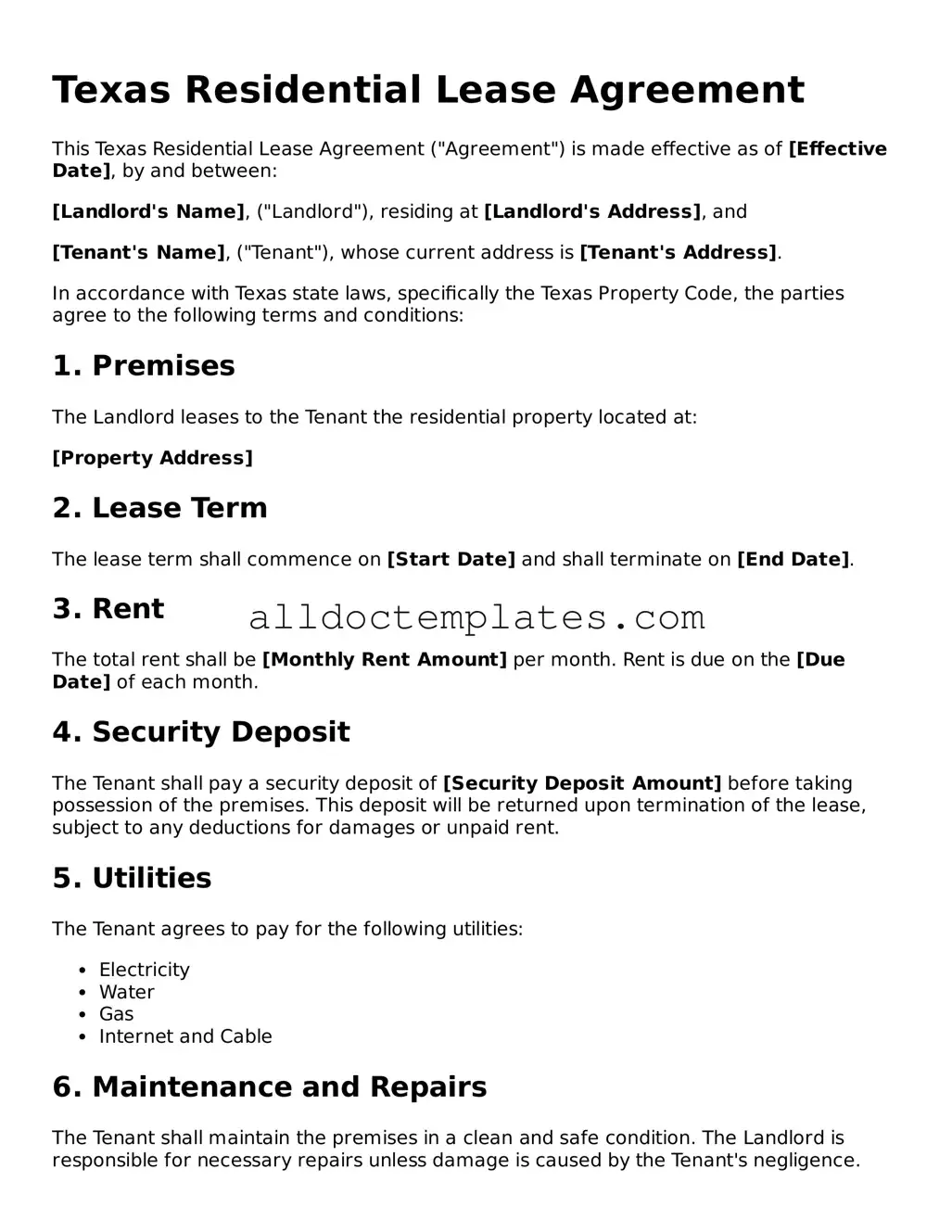Texas Residential Lease Agreement
This Texas Residential Lease Agreement ("Agreement") is made effective as of [Effective Date], by and between:
[Landlord's Name], ("Landlord"), residing at [Landlord's Address], and
[Tenant's Name], ("Tenant"), whose current address is [Tenant's Address].
In accordance with Texas state laws, specifically the Texas Property Code, the parties agree to the following terms and conditions:
1. Premises
The Landlord leases to the Tenant the residential property located at:
[Property Address]
2. Lease Term
The lease term shall commence on [Start Date] and shall terminate on [End Date].
3. Rent
The total rent shall be [Monthly Rent Amount] per month. Rent is due on the [Due Date] of each month.
4. Security Deposit
The Tenant shall pay a security deposit of [Security Deposit Amount] before taking possession of the premises. This deposit will be returned upon termination of the lease, subject to any deductions for damages or unpaid rent.
5. Utilities
The Tenant agrees to pay for the following utilities:
- Electricity
- Water
- Gas
- Internet and Cable
6. Maintenance and Repairs
The Tenant shall maintain the premises in a clean and safe condition. The Landlord is responsible for necessary repairs unless damage is caused by the Tenant's negligence.
7. Termination
This Agreement may be terminated by either party with a written notice of [Notice Period] days prior to the intended termination date.
8. Governing Law
This Agreement shall be governed by the laws of the State of Texas.
9. Entire Agreement
This document constitutes the entire agreement between the parties. Any modifications must be made in writing and signed by both parties.
IN WITNESS WHEREOF, the parties have executed this Agreement as of the date first above written.
______________________________
[Landlord's Name], Landlord
Date: ______________________
______________________________
[Tenant's Name], Tenant
Date: ______________________
